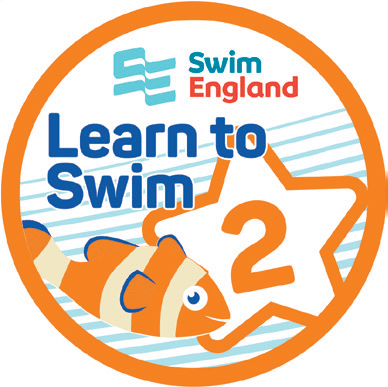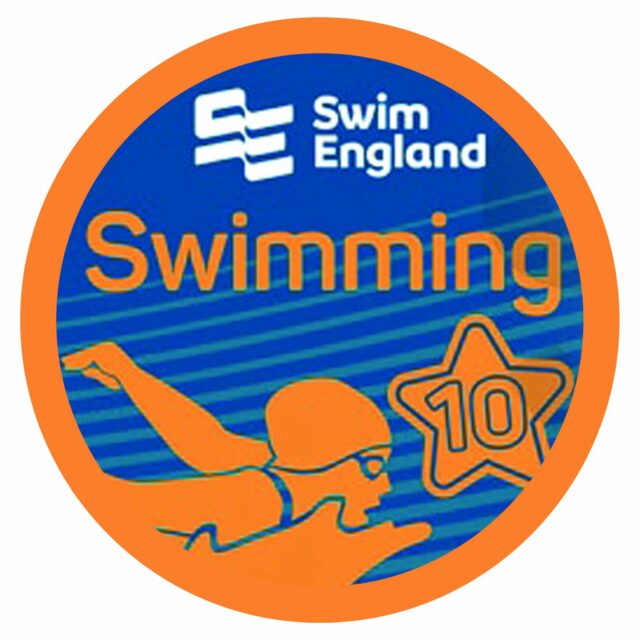Ardingly Swim School teaches both children and adults to develop swimming skills that enable confidence and safety in the water, in a fun, friendly and safe environment.
Swimming lessons for adults and children • All ages and abilities welcome • ASA Level 2 teachers • Small groups
The Ardingly Swim School is located at Ardingly College, just minutes from Lindfield, Cuckfield, Haywards Heath and surrounding villages. It takes place in the 25m indoor heated pool, with newly refurbished changing rooms. Parking is available.
Karen Pickering - Head of Swim School
Ardingly Swim School is run by four times Swimming World Champion Karen Pickering MBE. Karen made her international debut in 1986 and went on to win an incredible 35 Major Championship medals and 38 National Titles as well as competing in four consecutive Olympic Games.

Swim Stages
Learn to Swim 1
Developing basic safety awareness, the ‘class’ scenario, basic movement skills and water confidence skills. Swimmers may use aids, e.g. armbands, floats etc. By completing this Award, with or without floatation equipment or support, you will be able to:
- Enter the water safely.
- Move forward for a distance of 5 metres, feet may be on or off the floor.
- Move backwards for a distance of 5 metres, feet may be on or off the floor.
- Move sideways for a distance of 5 metres, feet may be on or off the floor.
- Scoop the water and wash the face.
- Be comfortable with water showered from overhead.
- Move from a flat floating position on the back and return to standing.
- Move from a flat floating position on the front and return to standing.
- Push and glide in a flat position on the front from a wall.
- Push and glide in a flat position on the back from a wall.
- Give examples of two pool rules.
- Exit the water safely.
Stage 2
Developing safe entries to the water. To include jumping in, basic floating, travel and rotation this is done unaided to regain upright positions. Swimmers may use aids, e.g. armbands, floats etc. By completing this Award, with or without floatation equipment or support, you will be able to:
- Jump in from poolside safely to a minimum depth of 1.0 metre.
- Blow bubbles a minimum of three times rhythmically, with nose and mouth submerged.
- Move from a flat floating position on the back and return to standing without support.
- Move from a flat floating position on the front and return to standing without support.
- Push from a wall and glide on the back – arms can be by the side or above the head.
- Push from a wall and glide on the front with arms extended.
- Travel using a recognised leg action with feet off the pool floor on the back for 5 metres, without the use of floatation equipment.
- Travel using a recognised leg action with feet off the pool floor on the front for 5 metres, without the use of floatation equipment.
- Perform a tuck to rotate from a flat floating position on the front, to a back floating position, then return to standing.
- Perform a tuck to rotate from a flat floating position on the back, to a front floating position, then return to standing.
- Perform a log roll from the back to the front.
Perform a log roll from the front to the back.
Exit the water without support.
Stage 3
Developing safe entries including submersion, travel up to 10 metres on the front and back, progress rotation skills and water safety knowledge. By completing this Award, without floatation equipment or support, you will be able to:
- Jump in from poolside and submerge to a minimum depth of 1.0 metre.
- Sink, push away from the wall and maintain a streamlined position.
- Push and glide on the front with arms extended and log roll onto the back.
- Push and glide on the back with arms extended and log roll onto the front.
- Travel 5 metres on the front, perform a tuck to rotate onto the back and return on the back.
- Fully submerge to pick up an object.
Correctly identify three of the four key water safety messages.* - Push and glide and travel 10 metres on the back.
- Push and glide and travel 10 metres on the front.
- Perform a tuck float and hold for three seconds.
- Exit the water without using steps.
*The four key water safety messages include:
1. Always swim in a safe place.
2. Always swim with an adult.
3. If you fall in, float, breathe, relax.
4. If someone else in trouble, call 999/112.
For more information on water safety, visit the RNLI website and take a look at our Water Safety and Survival Awards.
Stage 4
Developing the understanding of buoyancy through a range of skills, refining kicking technique for all strokes, and swimming 10 metres to a given standard as directed by the ASA. By completing this Award, without floatation equipment or support, you will be able to:
- Perform a sequence of changing shapes (minimum of three) whilst floating on the surface and demonstrate an understanding of floating.
- Push and glide from the wall towards the pool floor.
- Kick 10 metres backstroke (one item of equipment optional).
- Kick 10 metres front crawl (one item of equipment optional).
- Kick 10 metres butterfly on the front or on the back.
- Kick 10 metres breaststroke on the front (one item of equipment optional).
- Perform a head-first sculling action for 5 metres in a flat position on the back.
- Travel on back and log roll in one continuous movement onto front.
Travel on front and log roll in one continuous movement onto back. - Push and glide and swim 10 metres, choice of stroke is optional.

Stage 5
Developing ‘watermanship’ through sculling and treading water skills, and complete rotation.
Stage 5
Developing ‘watermanship’ through sculling and treading water skills, and complete rotation, also performing all strokes to the given standard as directed by the ASA. By completing this Award you will be able to:
- Perform a flat stationary scull on the back.
- Perform a feet first sculling action for 5 metres in a flat position on the back.
- Perform a sculling sequence with a partner for 30-45 seconds to include a rotation.
- Tread water for 30 seconds.
- Perform three different shaped jumps into deep water.
- Push and glide and swim 10 metres backstroke (performed to Swim England expected standards).
- Push and glide and swim 10 metres front crawl (performed to Swim England expected standards).
- Push and glide and swim 10 metres breaststroke (performed to Swim England expected standards).
- Push and glide and swim 10 metres butterfly (performed to Swim England expected standards).
- Perform a handstand and hold for a minimum of three seconds.
- Perform a forward somersault.
Demonstrate an action for getting help.
Stage 6
Developing effective swimming skills including coordinated breathing; developing the water safety aspects and understanding of preparation for exercise. By completing this Award you will be able to:
- Give two examples of how to prepare for exercise and understand why it is important.Sink, push off on side from the wall, glide, kick and rotate into backstroke.
- Sink, push off on side from the wall, glide, kick and rotate into front crawl.
- Swim 10 metres wearing clothes.
Push and glide and swim front crawl to include at least six rhythmical breaths. - Push and glide and swim breaststroke to include at least six rhythmical breaths.
- Push and glide and swim butterfly to include at least three rhythmical breaths.
- Push and glide and swim backstroke to include at least six regular breaths.
- Push and glide and swim 25 metres, choice of stroke is optional (performed to Swim England expected standards).
- Perform a ‘shout and signal’ rescue.
- Perform a surface dive.
Stage 7
Developing quality stroke technique up to 100 metres, incorporating skills learnt and combining them to develop a linked routine and complete successfully an obstacle course that combines a variety of skills accomplished throughout stages 1 – 7. By completing this Award you will be able to:
- Push and glide and swim 25 metres backstroke (performed to Swim England expected standards).
- Push and glide and swim 25 metres front crawl (performed to Swim England expected standards).
- Push and glide and swim 25 metres breaststroke (performed to Swim England expected standards).
- Push and glide and swim 25 metres butterfly (performed to Swim England expected standards).
- Perform a movement sequence (linking skills with strokes and sculls) of one minute duration, in a group of three or more, incorporating a number of the following skills:Sculling: head first, feet first
- Rotation: forward or backward somersault, log roll
- Floating: star on the front or on the back, tuck float, create own
- Eggbeater: Moving, lifting one or both arms out of the water
- Perform a sitting dive or dive.
- Push and glide and swim 50 metres continuously using one stroke (performed to Swim England expected standards).
- Push and glide and swim 100 metres, using a minimum of three different strokes (performed to Swim England expected standards).
Tread water using eggbeater action for 30 seconds. - Complete an obstacle course (using a minimum of four objects) with feet off the pool floor throughout.
Stages 8-10
Once the swimmer has developed the core range of skills required to be confident, competent and safe in the water, the swimmer may then have the choice to take part in Fundamental Sport Skills, Stages 8-10 in competitive swimming or lifesaving. We also offer Rookie Lifeguard Courses, Fit-n-Fun, Aquatic Helper Courses or Distance Badges.
Term Dates
| Start Week | 4th, 5th, 7th & 8th September |
| Half Term | 21st October - 1st November |
| Finish Week | 11th, 12th, 14th & 15th December |
Swimming Ethos
Swim for life – Inspiring a love of the sport.
Water safety – Teaching skills that can save lives for life.
Individuals – Adapting lessons to suit each swimmer.
Motivating – Inspiring you to be the best you can be.











